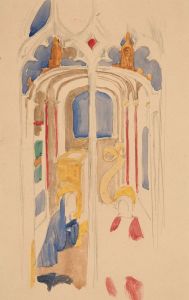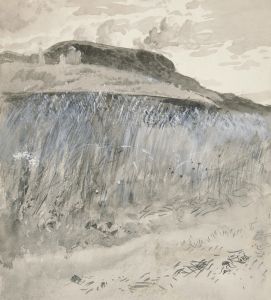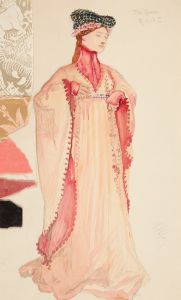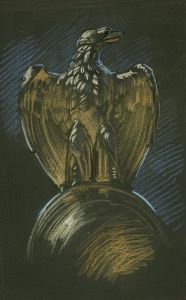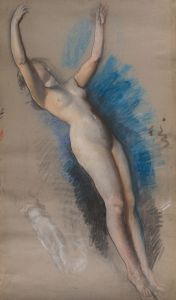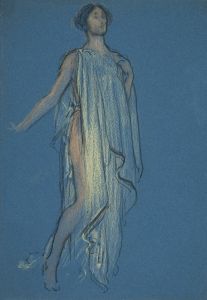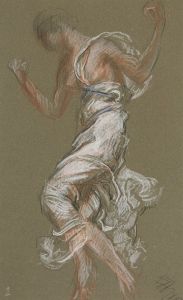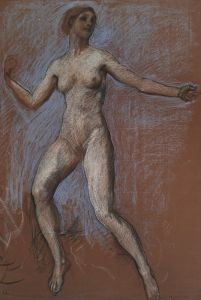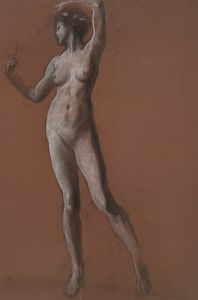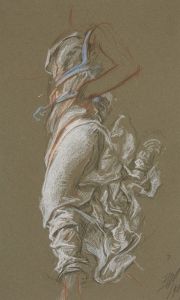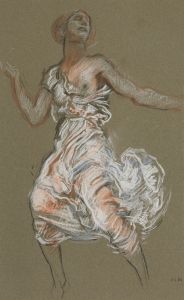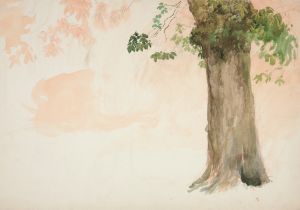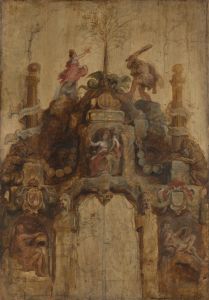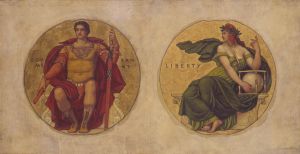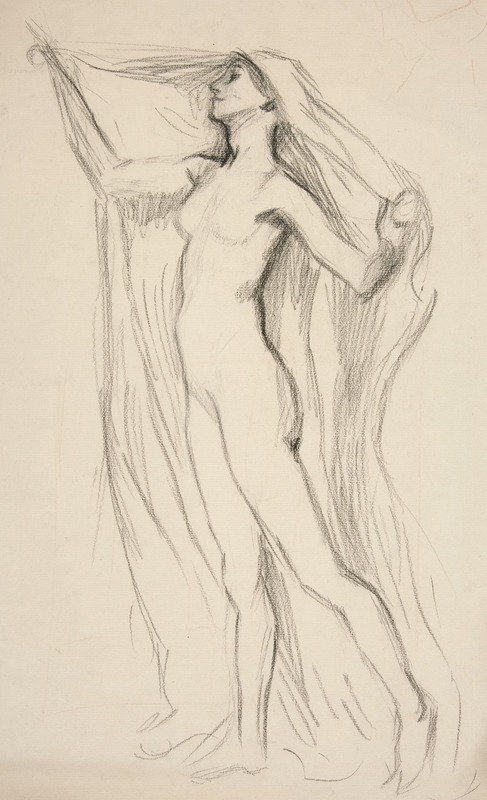
Figure study for mural at the State Capitol building in Harrisburg, Pennsylvania, 1902-1911
A hand-painted replica of Edwin Austin Abbey’s masterpiece Figure study for mural at the State Capitol building in Harrisburg, Pennsylvania, 1902-1911, meticulously crafted by professional artists to capture the true essence of the original. Each piece is created with museum-quality canvas and rare mineral pigments, carefully painted by experienced artists with delicate brushstrokes and rich, layered colors to perfectly recreate the texture of the original artwork. Unlike machine-printed reproductions, this hand-painted version brings the painting to life, infused with the artist’s emotions and skill in every stroke. Whether for personal collection or home decoration, it instantly elevates the artistic atmosphere of any space.
Edwin Austin Abbey's "Figure Study for Mural at the State Capitol Building in Harrisburg, Pennsylvania, 1902-1911" is a preparatory work created during the early 20th century as part of a larger commission for the Pennsylvania State Capitol. Abbey, an American artist known for his murals and illustrations, was commissioned to produce a series of murals for the new State Capitol building in Harrisburg, which was completed in 1906. His work was part of a broader effort to adorn the Capitol with art that celebrated Pennsylvania's history and culture.
Abbey's murals for the Capitol were intended to convey significant historical and allegorical themes. The "Figure Study" is one of many preparatory sketches and studies he produced in the process of planning and executing the final murals. These studies were crucial for Abbey to experiment with composition, form, and the arrangement of figures that would eventually be part of the grand murals in the Capitol.
The murals themselves were designed to reflect the spirit and history of Pennsylvania, incorporating allegorical figures and historical scenes. Abbey's work was characterized by its attention to detail and historical accuracy, as well as its vibrant color palette and dynamic compositions. His murals at the Capitol include depictions of significant events and personages from Pennsylvania's past, intended to inspire and educate the public.
Abbey's involvement in the Capitol project was part of a larger movement during the late 19th and early 20th centuries to incorporate fine art into public buildings, a trend that sought to elevate public spaces and make art accessible to a broader audience. This movement was influenced by the ideals of the American Renaissance, which emphasized classical themes and the integration of art and architecture.
Unfortunately, Abbey's work on the Capitol murals was cut short by his untimely death in 1911. Despite this, his contributions to the Capitol remain a significant part of his legacy and continue to be appreciated for their artistic and historical value. The "Figure Study" and other preparatory works offer insight into Abbey's creative process and his approach to monumental art.
Today, Abbey's murals and studies are recognized as important examples of American mural painting from this period. They reflect not only the artistic trends of the time but also the cultural and historical narratives that were important to the United States in the early 20th century. Abbey's work at the Pennsylvania State Capitol remains a testament to his skill as a muralist and his dedication to capturing the essence of American history through art.





